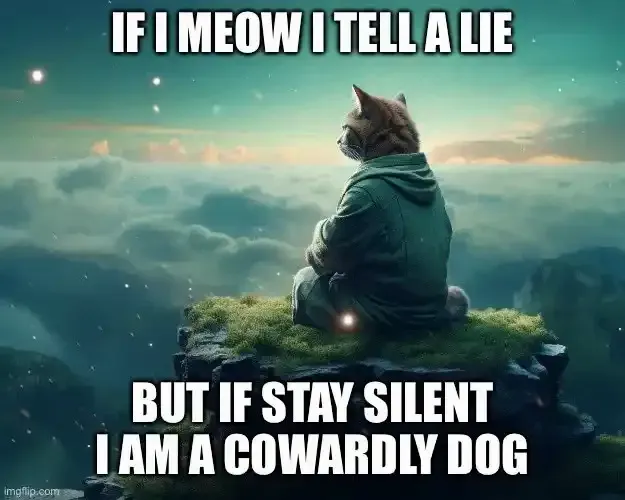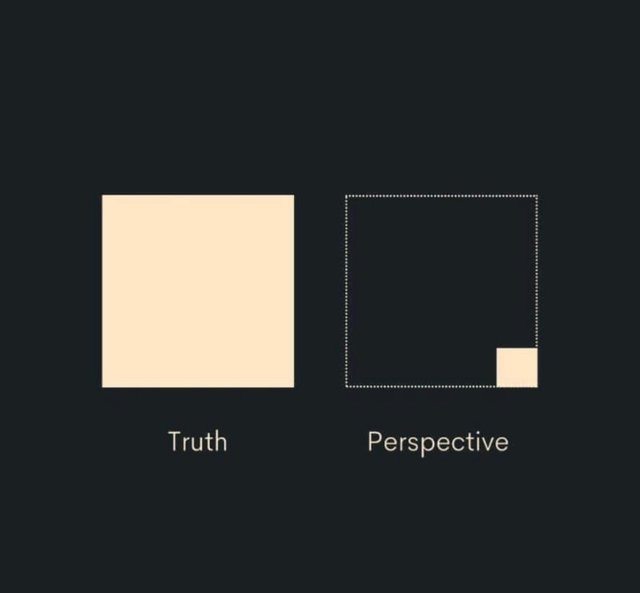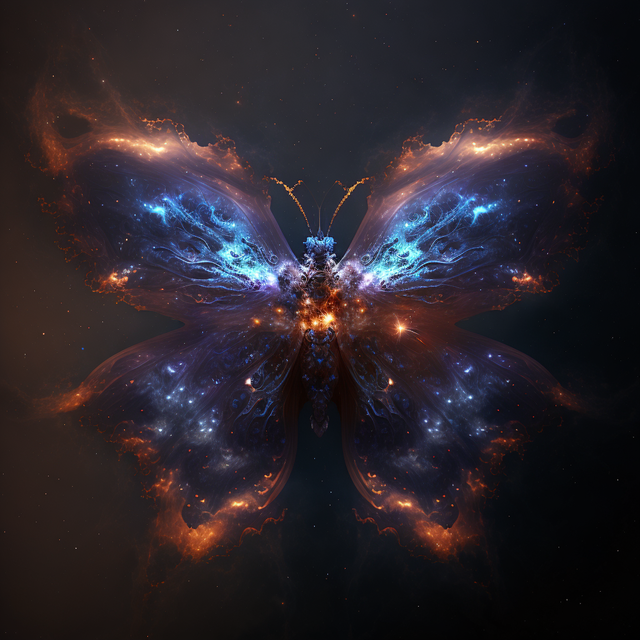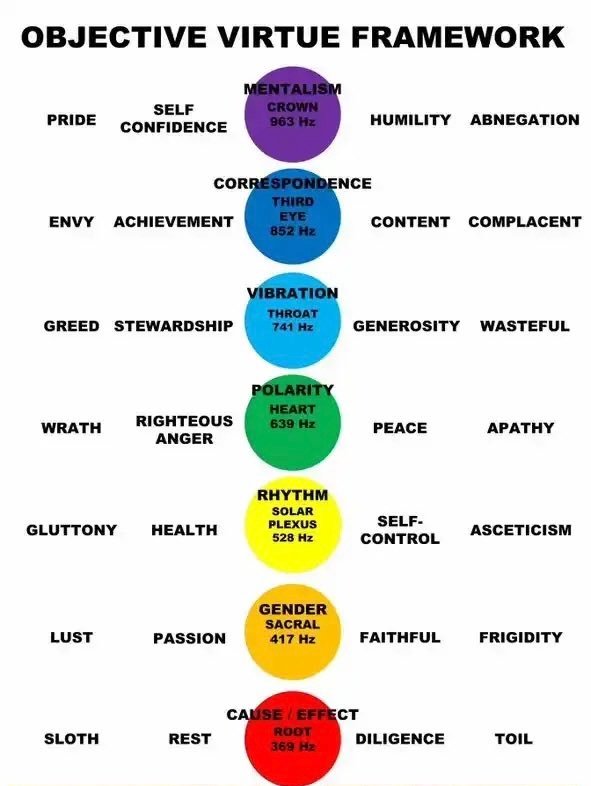The Wise Zen Master
It all started with a quote attributed to a wise zen master. Which one, I don’t know. The source didn’t say. The quote was this: “If I speak I tell a lie” meaning that any truth he gave regarding the nature of reality and the universe would be woefully incomplete and only a partial truth given from his limited finite perspective. However the zen master went on to say, “If I remain silent, I am a coward.” This got me thinking on the nature of perspective vs truth.
This being one of the reasons I like to continually challenge myself to shift my perspective. The more I shift, take in and integrate, the clearer the picture of truth becomes.
A thought occurred to me while meditating on all this. The zen master quote could be turned into a bit of a paradox. The revision I came up with goes like this: “A wise zen master cat once said, ‘If I meow I tell a lie, but if I remain silent I am a cowardly dog.’ So the cat thought for a moment and then did the only thing he could do. He opened his mouth and barked.”
Here is the paradox, was the cat lying or telling the truth? If he barked to imply the truth that he was a cowardly dog then he should have remained silent. But he is obviously not a dog or a coward so he must have been lying. But if he was lying he would have meowed. The truth is we may never know if the cat was lying or telling the truth but it highlights the underlying point I’m trying to make. Perspective shift is essential in the search for deeper truth. In order to reach a deeper understanding the zen master cat had to shift its perspective and think like a dog. This playful paradox of the zen master cat reveals how a single shift in perspective can unravel deeper mysteries, much like the universe itself challenges us to rethink our place within it.
All this talk about deeper truths and perspective shifting got me thinking on the nature of the universe in which we live. We live in an emergent universe governed by cause and effect. Every cause has an effect and every effect a cause. The universe is constantly changing and evolving and with that evolution it requires one to shift their perspective. Consider the perspective of a caterpillar weaving a chrysalis. Where once it was bound to the ground soon it will be a butterfly and free to float through the sky. What an incredible evolution and shift in perspective. The truth of the matter is, in a universe that is constantly emerging into something new, one must not remain stagnant in their old perspective. Stagnant leads to death.
When considering the nature of cause and effect I inevitably came to consider what a root cause, the origin of all other effects would look like. It lead me to the following premise:
The only root cause necessary in an emergent universe is one that needs no other cause and fully embodies every effect that springs from it.
But this led me to some difficult questions. How could everything that ever was already exist in the beginning? And what would be the point in setting anything in motion if it was already complete to begin with?
It can’t and it wouldn’t which is what led me to consider quantum mechanics for the answer to these questions. You see, in the formulas of quantum mechanics the concept of time seems to break down. In fact many physicists theorize that all time exists and is happening at the same time. Based on the quantum eraser experiment some even theorize that retrocausality is possible where the future influences the past just as much as the past influences the future.
The quantum eraser experiment demonstrates how observing or measuring a quantum particle, like a photon, can alter its behavior. In this experiment, entangled photons are sent through different paths. When one photon’s path is measured, it affects the pattern of the other, either showing the pattern of a wave form if not detected or that of an particle if it is detected, even if the detection happens after the partner photon hits the wall. This suggests that the act of observation can retroactively influence past events, hinting at the possibility that time may not be as linear as we perceive. Some very difficult concepts to wrap one’s head around.
Each moment is like a pixel on a screen and the sum of every moment is the full picture. That picture already exists. For example we are 3 dimensional beings that experience time flowing in one direction. But if you are a 4 dimensional being you could move through time just like we do 3 dimensional space.
This led me to the conclusion that there are three main forces that govern reality as we know it. I call them Infinite Completion, Infinite Possibility and the Infinite Now.
Infinite completion is the full picture standing at the end of time reaching back through time to guide and help us along the path that leads to the best possible outcome.
Infinite possibility is the blank canvas at the beginning of time that has infinite curiosity and asks what happens if I went this way instead which inevitably leads it into trouble as it often does not choose the path with the best outcome
Neither one is necessarily good or evil. It could be said that Infinite Completion is oppressive and controlling trying to stifle Infinite Possibility’s freedom just as much as it could be said Infinite Possibility is unruly and disobedient.
All of this is happening and playing out here in the infinite now, every moment of present time in every choice we make. In this situation the concept of God is literally a perfect, complete and unified consciousness at the end of all time reaching backward and trying to bring itself into existence.
If a universal constructor can’t construct itself…
It isn’t universal.
It is like a master painter gently guiding his student. Just because they both have a vision of what the painting will eventually look like, doesn’t mean they know every brush stroke it took to get there in advance. That is what the Master and student are discovering together in each moment and with each stroke the student makes.
The master painter gently guides the student, not with a rigid blueprint, but with a shared vision that evolves with each brushstroke. This mirrors the zen master cat’s paradox—truth is not a fixed point but a process, shaped by shifting perspectives. As the student learns to see the painting through the master’s eyes, they uncover layers of meaning, much like we must adjust our viewpoints to grasp the deeper truths of an emergent universe. Each stroke reflects a choice, a perspective, contributing to a truth that only emerges fully in hindsight, guiding us toward Infinite Completion while honoring Infinite Possibility.
This interplay of Infinite Completion, reaching back to guide us toward the best outcome, and Infinite Possibility, exploring every potential path, unfolds within the Infinite Now—the ever-present moment where all choices converge. Just as the quantum eraser experiment suggests time is a unified tapestry, our individual experiences weave into this greater whole. Thus, God isn’t some old man looking down from above, but a perfect, unified consciousness emerging through us. It resides within each of us, experiencing the universe’s evolution through our eyes, shaped by our shifting perspectives and guided by the truth we co-create with every decision in the Infinite Now.
All this thinking about the nature of God led me to wonder about objective virtue. Does it exist? After all, who defines the “optimal outcome.” Could there be a set of principles that everyone could agree upon? Or is everything subjective and based on each individual’s perspective?
My father used to say, “The price of freedom is virtue.” I never really understood it as a child but now I understand it to mean that the more evil in the world the more laws, police and judges we need to keep us safe… but also the more oppressive the government becomes at restricting our freedoms. In order to be truly free we must impose the laws of virtue on ourselves and act to be our own police. Then that would render the need for external laws pointless letting us be truly free. But what is virtue and who defines it?
In my quest to understand virtue I came across the 7 deadly sins and wondered if there was a virtue that mirrored those sins? I began to draw connections to those sins. I discovered that each sin and matching virtue could be aligned to one of the 7 chakras. I also stumbled upon the 7 Hermetic Principles which are rules that seem to govern our reality. Things started to click into place and each of those principles seemed to align to one of the chakras as well. So I created this:
Every sin has its counterpart virtue. Additionally there are healthy expressions of each sin and unhealthy expressions of each virtue. Anything good taken to the extreme can become something bad.
The Root chakra connected to the principle of cause and effect, our root / feet take us out into the world generating effects from each step we take. This hermetic principle states that every cause has an effect and every effect a cause. The sin sloth sits and does nothing, creating no effects while the virtue diligence does the necessary work willingly. But you can take diligence too far which then becomes toil where you get over worked and burnt out. This needs to be balanced by the healthy expression of sloth which is rest and relaxation. Everyone needs time to recover. Even God rested on the 7th day.
Moving upward the sacral chakra tied to our sexual organs is connected to the principle of gender. Gender exists in all living things and everything has a masculine and feminine expression. The sin of lust is tempered by the virtue of faithfulness and the healthy expression of lust is passion. No relationship survives without some level of passion. And faithfulness taken too far becomes frigidity, completely denying and repressing the expression of passion which inevitably leads to over correcting and falling into lust.
This leads us to the solar plexus chakra which is tied to the stomach and is the battery that powers the body. It is connected to the principle of rhythm. Everything in balance, flowing in and flowing out. The pendulum swing to the left is always followed by an equal swing to the right, just as we see this playing out with each sin and virtue. Is your pendulum swinging wildly from one extreme sin to the other or is it more balanced and slower only swinging a little in each direction staying within the realm of virtue? Gluttony of course is the sin tied to this principle with self control being the virtue that tempers it. Health is the balanced form of gluttony and asceticism is the unhealthy expression of self control taken too far. Denial of what is necessary to healthily power the body.
Heart is the next chakra and it is tied to the principle of polarity. Everything has poles. Everything has its equal and opposite. Hate and love are two sides of the same coin for example, both are full of passion. Hate isn’t the opposite of love, hate is just love corrupted by anger. Indifference is the true opposite of love. Indifference is void of any passion care or concern. Nothing causes more damage to a something than indifference. The sin of wrath is tied to this chakra along with its virtue peace but when peace is taken too far it becomes apathy. It is possible to remain too neutral for the sake of peace. The saying goes, the only thing a good man needs to do for evil to win is to stand by and do nothing. Sometimes you must pick a side and that is where righteous anger, the healthy expression of wrath comes in. Righteous anger takes action to correct a wrong.
Next we have the throat chakra tied to the principle of vibration. The universe is constantly in motion. Everything moves, everything vibrates. The throat vibrates to give us our voice. It connects us to others through language. Now that language can be controlled by greed, hurting and taking from someone or it can be generous and edifying. Sometimes you can be too generous and end up being wasteful by enabling someone. Giving them lip service for example. That’s where greed tempered by generosity becomes stewardship. Stewardship might mean buying a homeless person a meal instead of giving cash, ensuring the gift of resources to support their well-being rather than enabling harmful choices. Giving the right thing at the right time and conserving valuable resources.
Moving onward we have the Third Eye chakra tied to the principle of correspondence. This principle states as above so below, as below so above. Everything corresponds on all planes of existence. What we see playing out here in our reality is also playing out at higher levels and dimensions. The third eye chakra is dual in nature and has depth perception just like our natural eyes. It looks deeply inward and the inner universe of the self as well as outward at the unknown supernatural on other planes of existence. It reaches beyond what we see in normal reality to reveal things that are hidden from natural sight. It is the gateway to deeper truth. The sin tied to this chakra is envy and is tempered by the virtue of contentment. The eyes see what someone else has and they covet it. When expressed in a healthy way envy leads us to reach out and achieve things. Just as contentment taken too far can lead to complacency where we get too comfortable where we are and new achievement grinds to a halt. As above, so below suggests that envy’s drive to achieve mirrors cosmic ambition, while complacency reflects a stagnation echoed across dimensions.
Lastly we have the crown chakra tied to the principle of mentalism. The universe is all mental, the mind is everything. Existence must be observed by a conscious mind in order to exist. In quantum mechanics there exists a thing called superposition. An example is the electron it exists in two states at once with spin up and spin down until however it is observed and resolves into one of those states. The Schrödinger’s cat thought experiment demonstrates this. The cat is both alive and dead at the same time until you open the box and observe the truth. The act of observation collapses the superposition into a definite state just as the act of observing reality makes it resolve into the truth. The Crown chakra is tied to the sin of pride and the virtue of humility. Realizing that each one of us is but a tiny speck living on a tiny speck floating through the vast cosmos. Pride expressed in a healthy way is self confidence whereas humility taken too far is abnegation and self depreciation.
Finally we have the hidden virtue and hermetic principle which is expressed in all of the other seven, the nature of caring. The things we care about determine our reality. They are the things we think about the most. Thoughts turn into actions, actions become habits and our habits shape our reality. Care is very similar to love the only difference being that caring leads to action and love can often just be a feeling we have. It could lead to action or it might not.
Christ said the two most important commandments were love God above all else and the second equal to the first, love others as you would your self. There are actually three types of love hidden in those commandments, love of God, love of others, and love of self. I would amend that verse to say care about God, care about others, and care about yourself because caring leads to action.
I see each of these seven chakras as a cage or chrysalis. A challenge to master the virtues and principles tied to each one. With each one you master you break free from the cage and evolve into a more virtuous and righteous person. Mastering each chakra’s virtue, fueled by caring—love in action—unlocks our evolution, transforming us from caged beings into beings of infinite potential, much like the butterfly emerging from its chrysalis.
As we master each chakra’s virtue, breaking free from its chrysalis, we encounter our inner demons—those forces of torment and pain that test our resolve. Yet, these adversaries are the catalysts of our transformation, pushing us to either succumb or rise with newfound strength. Without this struggle, as the caterpillar endures to become a butterfly, would we have reached the heights we stand at now?
This resonates with the wisdom in King Arthur: The Legend of the Sword, where the born king reflects as he defeats the demon that killed his father:
“You wanted to know
What gave me such drive
It was you
You put me in that brothel
You cut me on the streets
I am here now
Because of you
You created me
And for that I bless you
For you make sense of the devil”
This powerful acknowledgment suggests we should thank and bless these demons for their sacrifice, driving us to run our sword through their hearts—not in malice, but in triumph. Just as each chakra’s mastery requires confronting its sin, our growth emerges from this painful yet necessary battle, aligning with the caring action that fuels our evolution toward whatever the future may hold.
As I reflect on this journey through virtues, chakras, and the transformative power of our demons, I return to the zen master’s wisdom: “If I speak I tell a lie.” All that I’ve shared—my musings on truth, perspective, and the emergent universe—springs from my own limited viewpoint, a finite lens through which I strive to glimpse the infinite. Like the zen master cat’s paradox, this narrative is but a bark, an imperfect expression of a deeper reality, inviting you to shift your perspective and seek your own truth.



